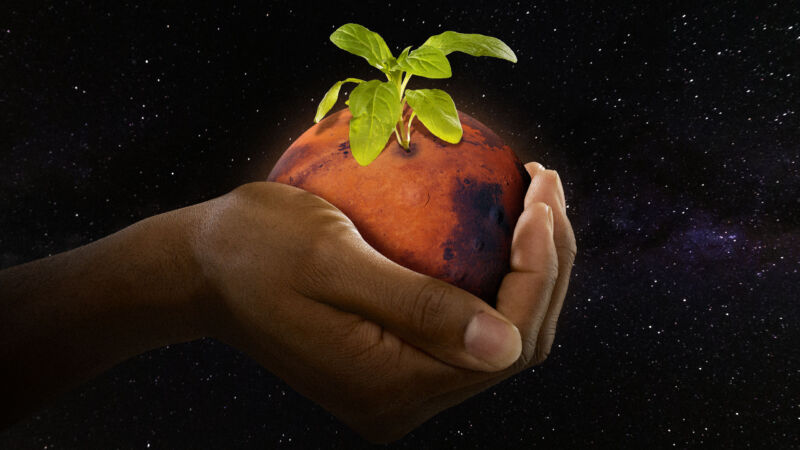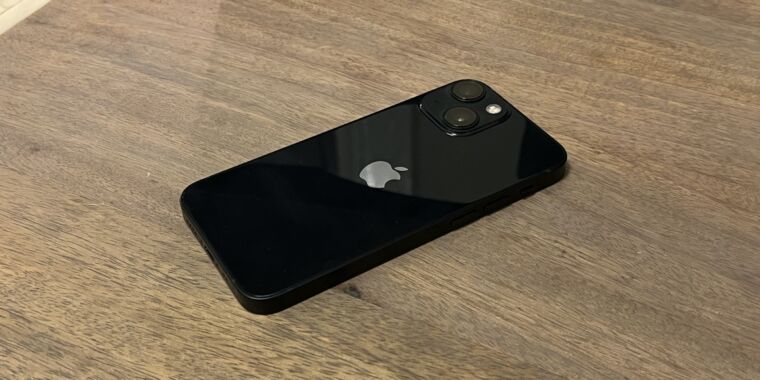
Aurich Lawson | Getty Images
In 1829, Nathaniel Bagshaw Ward, a doctor living near Wellclose Square in London, dropped a few seeds of fern and grass into a bottle partially filled with soil. Soon, he witnessed tiny blades of grass and one little fern sprouting from the soil, despite the bottle having been sealed. It turned out that plants, cycling through whatever water, minerals, nutrients, and atmosphere they had in their bottle, could live and grow almost completely isolated from the outside world, using sunlight as their only energy source.
Today, after over six decades of researching bioregenerative life support systems, we’re edging closer to pulling the same trick off in habitats designed to support astronauts on alien worlds.
BIOS and CELSS
Bioregenerative life support systems are the product of two visionaries. In 1926, Vladimir Ivanovich Vernadsky, the founder and first president of the Ukrainian Academy of Sciences, elaborated the concept of the biosphere, a closed material cycle on a planetary scale that could be indefinitely sustained in part through life itself. In 1929, Konstantin Eduardovich Tsiolkovsky, a Russian rocket scientist, applied Vernadsky’s concept to space travel and proposed using small-scale closed ecosystems to support life on spaceships. The job of those ecosystems would be to produce air and food while recycling waste.
The space race era saw the concepts developed by Tsiolkovsky and Vernadsky implemented in Moscow at the BIOS-1 facility. It consisted of two connected compartments: a microalgae cultivator and a living space for one crew member. The microalgae would take the CO2 exhaled by the human and release its oxygen via photosynthesis. It worked, more or less, but there were regular imbalances caused by the differences in metabolism between the human and algae. It was eventually fixed by changing the human’s diet, but everybody involved recognized that you can’t change a diet midflight on a spaceship. Any miscalculation would probably kill the astronauts on a real mission.
In 1969, BIOS-1 evolved into BIOS-2, where a greenhouse with vegetables was added as a third compartment, soon followed others: a compartment for wheat and another with a microbial cultivator for oxidizing solid human waste. Experiments with humans were gradually lengthened from 12 hours to 24 hours, then to two weeks, and finally to 90 days spent in the facility. At the same time, another team built the BIOS-3 facility, which relied on the same tech but could be controlled from the inside by the crew and was arranged to resemble cabins of Soviet spaceships from that era.
BIOS-3 experiments showed how much labor it took to operate this system. Results were bleak. Astronauts basically worked like full-time farmers just to keep it going.
On the other side of the Iron Curtain, NASA was doing small-scale experiments in which algae colonies were used to produce atmosphere and food for mice. Those experiments developed into more advanced demonstrators built under the CELSS research program in the 1970s, which combined multiple organisms and higher plants to combat the oxygen balance issue already encountered by the Soviets.
Both BIOS facilities and CELSS demonstrators relied on a similar architecture and underlying concepts. So it’s no surprise that they suffered from a similar limit: There was very little control over what exactly the biological component was doing.
The plant chamber acted as a black box. American and Soviet engineers knew that a given input would yield an essentially predictable output and scaled the system based on the number of crew members. Processes already operating in nature were copied and pasted into confined, isolated spaces. It was like solving flight by imitating birds.
Things didn’t change until 1987, when Claude Chipaux, a space engineer working for a company that later became Airbus, proposed building an entirely new bioregenerative life support system called MELiSSA.








